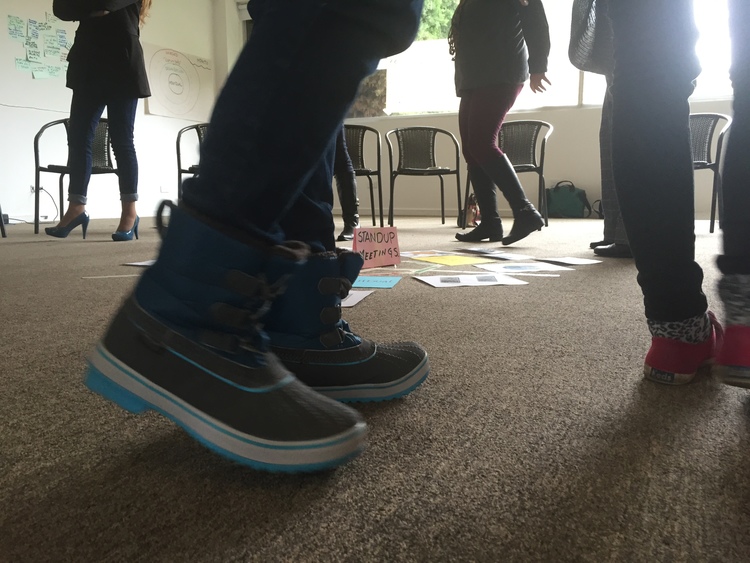The Practice of Collaboration 1: Stand Up Meetings

Stand Up Meetings are an effective way for people in organizations to stay in regular contact, sharing knowledge and information while supporting each other. Stand up meetings do not take more than 15 minutes per day but have a big impact on the way people work together.
ecloo is presenting with every newsletter methods and practices of collaboration to help people improve the way they work together. Today, we feature the stand up meeting activity which was developed in the context of SCRUM, the agile software development method. Stand up meetings can be a powerful tool to improve collaboration in many businesses and organizations outside of software development.
Purpose of Stand Up Meetings
Stand Up meetings help people in organizations to share information and knowledge on a regular basis and in a time efficient manner. In addition, stand up meetings create the space for people to ask for help without being seen as weak. Hence, stand up meetings help to institutionalize the helping relationship in organizations which leads to better collaboration, innovation (see: Harvard Business Review Article on how Helping Culture can lead to Innovation) and an improve organizational climate: people talk more with each other than about each other. In other words, stand up meetings can strengthen the relationships in organizations and build trust.
How Do Stand Up Meetings Work?
Here you find the classical way of how stand up meetings work. Depending on your context and your culture, you may want to adapt the methodology.
Stand up meetings take 15 minutes and typically take place at the beginning of each day. People working together stand up in a circle (standing up helps people reduce the amount of time they speak or in other words, this eliminates the temptation to engage in lengthy speeches and boring meetings). Going around in the circle, each person responds to 3 simple questions individually:
- What did I do yesterday?
- What will I do today?
- Where do I need help?
Each person responds to each question briefly. The last question helps to engage with one another and if person A has a certain problem, person B may be able to help (note: person B may be lower in the hierarchy than person A so flat hierarchies may be an easier environment to implement this activity). Problems are not discussed in detail during the stand up meeting, however, the group identifies how Person A can receive help and may then set up a separate meeting between the person who needs help and the people who can provide help.
Applying this to Your Organization
Try it out in your organization and see what the results are. Maybe you form different groups of 5 to 10 people who do daily stand up meetings for a week or two and then evaluate. You may decide to do this less frequently, you may adjust the questions to your needs and culture. We suggest you try it out and observe the impact:
- Does information and knowledge sharing improve?
- Are people supporting each other more effectively?
- Are people having more fun at work? Do they become more engaged?
- Does the overall collaborative environment improve?

